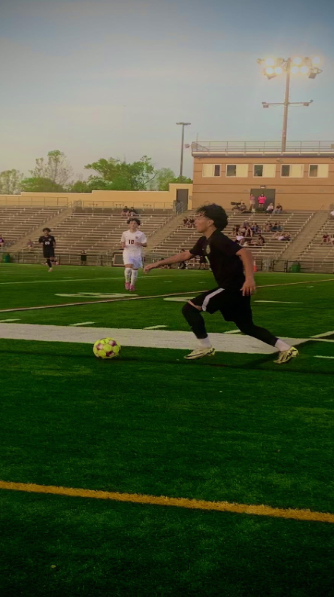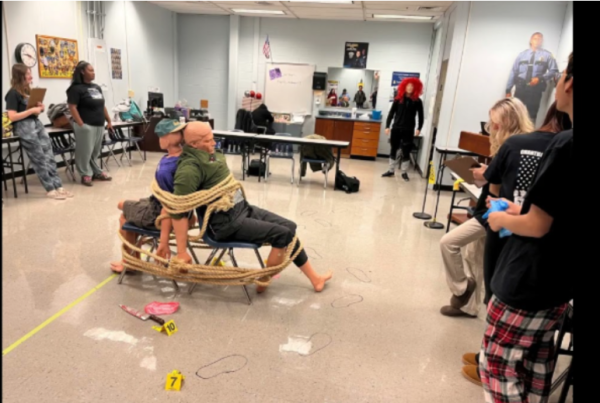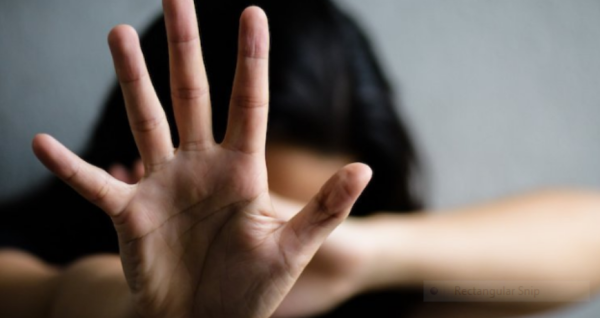The Couch: THE WEIGHT OF ANXIETY
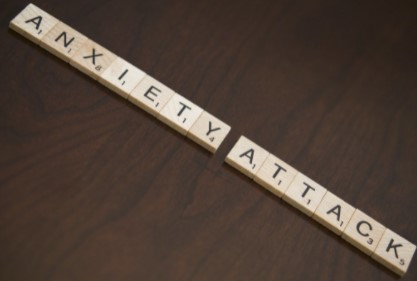
Photo courtesy of Creative Commons
Anxiety attack.
The Couch examines a topic relevant to mental health and human relationships– a breakdown of some common challenge to our mental health.
I stood in the middle of the room, trying to control my breathing. My heart felt as if it were racing at 100 miles per hour. My stomach churned as I watched the world around me fade into splotches of colors.
I could hear my mom as she called my name, attempting to release me from the depths of my mind. I couldn’t focus on my mom’s voice; all I could focus on was the fear. The fear of what was to come next.
My fixation let up a little, and I could finally focus on my mom’s voice, but that’s when the feeling came. I felt my lunch rise within my stomach, my feet carrying me to the closet bathroom. I took in a shaky breath as I stood over the toilet, my lunch inching up further and further into my throat. With a small little burp, it all came up: my fears, worries, and lunch.
The moments after created a false sense of security, the anxieties being washed away with the flush of the toilet. Then they came again, marching their way back into my brain with the simple thought of — will this happen again?
Anxiety is a term that has a different meaning to everyone but the most common definition, according to MedlinePlus, is a feeling of fear, dread, and uneasiness. Anxiety usually comes with the following symptoms, as reported by multiple sources: sweating, the feeling of restlessness, and an increased heart rate.
“I think many students experience anxiety in stressful situations like taking a test, making a class presentation or when experiencing something new and unfamiliar,” stated Dana Hughes, guidance counselor.
Anxiety can happen to anyone at any time; that’s the tricky thing about it. According to the Anxiety and Depression Association of America(ADAA), anxiety disorders are the most common disorders, affecting about 18.1% of adults in the United States. According to the National Alliance on Mental Illness(NAMI), every year around 7% of children ages 3-17 report experiencing an episode of anxiety. Though the numbers may seem low, this amounts to about 4.4 million children. Several sources, such as ADAA and NAMI, agree that many people with anxiety don’t actually receive any help; meaning the numbers could be higher.
Sadly, there are multiple different causes to anxiety, which makes identifying the cause harder. According to MedlinePlus, the root of anxiety is unknown. Factors such as genetics, brain biology and chemistry, stress, and your environment may play a role.
When it comes to identifying an anxiety disorder, because there are so many symptoms that could happen day to day, there are many amounts of testing people have to go through. Personally, I’ve been through many different tests in order to identify my anxiety. I had taken psychological evaluations, lab testing, and a simple meeting with a psychiatrist.
Usually when people go to get help, it means that anxiety has affected their everyday life. In my case, about a year ago, I wasn’t able to go through a whole school day without crying. It lasted for about a month but during that time I was seeing multiple therapists and taking medication. I’ve found that anxiety usually impacts people’s school work in negative ways.
When asked if anxiety affects their school work, a Westfield sophomore who wishes to remain anonymous replied, “Yes it does, right now I have like 3 projects and every time I think about it I just feel so overwhelmed I want to run away from my own mind.”
“I’m better at it now,” affirmed Damien Mcdonald, 12, who was asked the same question. “I used to not be able to focus while trying to do school work. A lot of things would stress me out and I wouldn’t stay organized.”
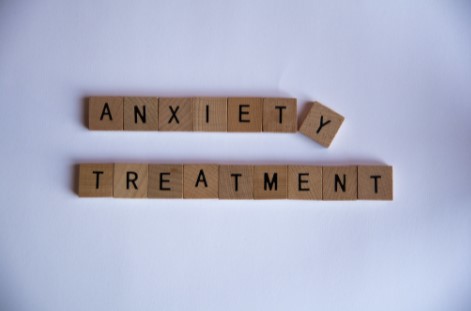
There are many different ways to deal with anxiety. The treatment depends on how mild or severe the anxiety is. If the case is severe, the next steps are usually medication and some form of talk therapy.
Though regular talk therapy may be hard to access, depending on income levels, there is a club at Westfield that brings attention to mental health.
“Westfield Minds Matter is a great support group,” Hughes remarked, “We talk a lot about anxiety and strategies we can use to help ourselves and each other.”
Westfield’s Minds Matter is a club that strives to end the stigmas attached to mental health. The club officers promote the club as a way for students to create a safe environment, where they are able to discuss their mental health. They meet once a month, and the attendance grows with every meeting held.
There are also coping mechanisms that can be used under the radar. For example, I do this process called square breathing where I would breathe in for four seconds, hold it for four seconds, breathe out for four seconds, and then hold for another four seconds. The method was recommended to me by my doctor, at the beginning of our sessions. Though that is the particular method I use, different strategies work for different people.
“Putting ice in my mouth or in my hand, watching my comfort show, or just doing something to distract me are methods that work for me,” the anonymous student commented.
“Music, sometimes reading, or kinetic sand. Usually something I can physically touch,” Mcdonald reflected.
Another good way to fight anxiety is to confide in someone–a parent, friend, or trusted adult. Confiding in someone really helped me; whenever I was going through something I always went to my mom first. My mom would always give me advice that I would take to heart; if it weren’t for this advice, I don’t think that I would have gotten over the anxiety attacks.
Going to friends also works well, especially friends who have anxiety as well. Being able to confide in friends who understood what I was going through helped because they gave me advice that worked for them, meaning that it actually worked. Their advice wasn’t something that was just a statistic, it was something real.
Anxiety may seem like an endless tunnel of darkness, but it eventually becomes something that can be managed. I’ve made it so far from where I had been in the past with these coping mechanisms and by talking about it. I still have moments where I find myself over a toilet, but they happen less with every passing day. I’m able to live my life without that fear now, and I love it.
There is always light at the end of the tunnel, even when the darkness of the tunnel is blinding you.

Hello, I'm Naysa the Senior-Editor In Chief of the paper! I love all forms of art and self expression <3

